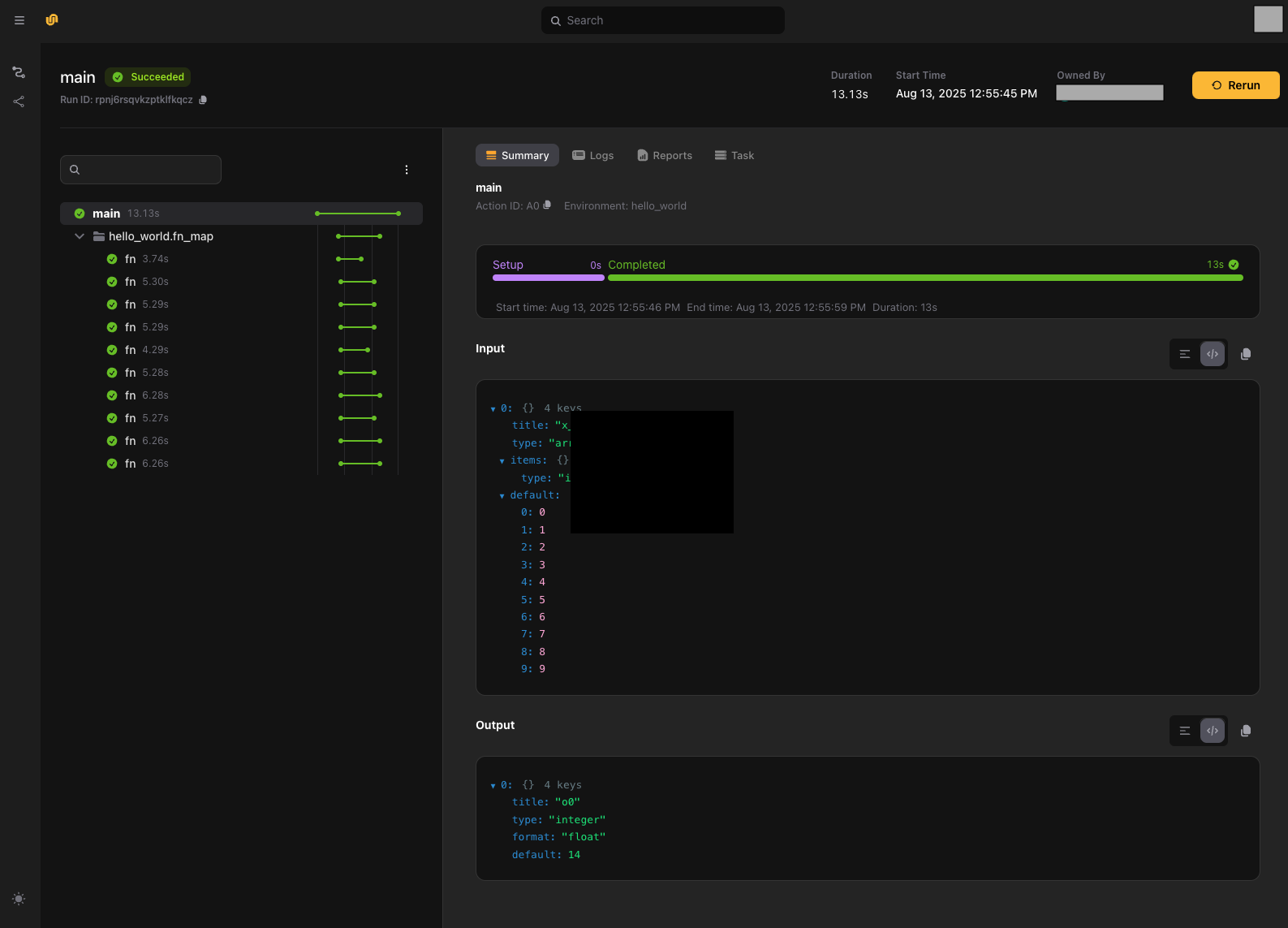Getting started
This section gives you a quick introduction to writing and running workflows on Union and Flyte 2.
Prerequisites
You will need the following:
- An active Python virtual environment with Python 3.10 or later.
- The URL of you Union/Flyte instance.
- An existing project set up on your Union/Flyte instance where you have permission to run workflows.
Install the flyte package
Install the latest flyte package in the virtual environment (we are currently in beta, so you will have to enable prerelease installation). For example:
pip install --pre flyteCheck that installation succeeded (and that you have activated your virtual environment):
flyte --versionCreate a config.yaml
Next, create a configuration file that points to your Flyte instance.
Use the
flyte create config command, making the following changes:
- Replace
my-org.my-company.comwith the actual URL of your Flyte backend instance. You can simply copy the domain part of the URL from your browser when logged into your backend instance. - Replace
my-projectwith an actual project. The project you specify must already exist on your Flyte backend instance.
flyte create config \
--endpoint my-org.my-company.com \
--builder local \
--domain development \
--project my-projectEnsure local Docker is working
We are using the --builder local option here to specify that we want to
build images locally.
If you were using a Union instance, you would typically use --builder remote instead to use Union’s remote image builder.
With Flyte OSS instances, local is the only option available.
To enable local image building, ensure that
- You have Docker installed and running on your machine
- You have permission to read from the public GitHub
ghcr.ioregistry. - You have successfully logged into the
ghcr.ioregistry using Docker:
docker login ghcr.ioBy default, this will create a ./.flyte/config.yaml file in your current working directory.
See
Setting up a configuration file for details.
flyte get config to see the current configuration file being used by the flyte CLI.Hello world example
Create a file called hello.py with the following content:
# hello.py
import flyte
# The `hello_env` TaskEnvironment is assgned to the variable `env`.
# It is then used in the `@env.task` decorator to define tasks.
# The environment groups configuration for all tasks defined within it.
env = flyte.TaskEnvironment(name="hello_env")
# We use the `@env.task` decorator to define a task called `fn`.
@env.task
def fn(x: int) -> int: # Type annotations are required
slope, intercept = 2, 5
return slope * x + intercept
# We also use the `@env.task` decorator to define another task called `main`.
# This is the is the entrypoint task of the workflow.
# It calls the `fn` task defined above multiple times using `flyte.map`.
@env.task
def main(x_list: list[int] = list(range(10))) -> float:
y_list = list(flyte.map(fn, x_list)) # flyte.map is like Python map, but runs in parallel.
y_mean = sum(y_list) / len(y_list)
return y_mean
Understanding the code
In the code above we do the following:
- Import the
flytepackage. - Define a
TaskEnvironmentto group the configuration used by tasks. - Define two tasks using the
@env.taskdecorator.- Tasks are regular Python functions, but each runs in its own container.
- When deployed to your Union/Flyte instance, each task execution will run in its own separate container.
- Both tasks use the same
env(the sameTaskEnvironment) so, while each runs in its own container, those containers will be configured identically.
Running the code
Assuming that your current directory looks like this:
.
├── hello.py
└── .flyte
└── config.yamland your virtual environment is activated, you can run the script with:
flyte run hello.py mainThis will package up the code and send it to your Flyte/Union instance for execution.
Viewing the results
In your terminal, you should see output like this:
cg9s54pksbjsdxlz2gmc
https://my-instance.example.com/v2/runs/project/my-project/domain/development/cg9s54pksbjsdxlz2gmc
Run 'a0' completed successfully.Click the link to go to your Flyte/Union instance and see the run in the UI:
